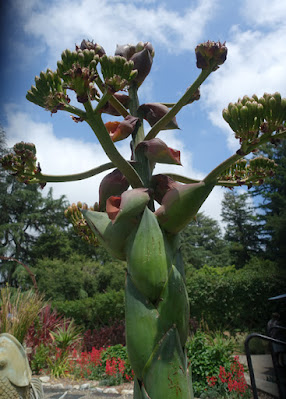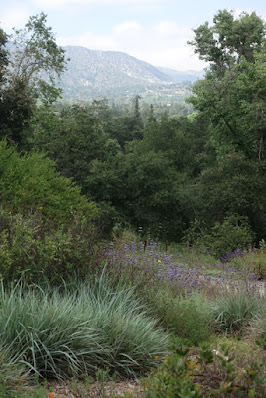 |
| Reykjavik, Iceland. Bravo bar in a quintessential Reykjavik corrugated-iron-clad building. |
My friend Caroline Hatton, a children’s book writer and frequent contributor to this blog, loved strolling through Reykjavik in June 2023 and taking all but one photo in this post. This is Part 1. Part 2 will appear next week.
When the Covid pandemic hit in 2020, the week-long horse trek I had previously booked in Iceland got canceled. But after a few years staying safe at home, and getting vaccinated and boosted against Covid and its variants, I booked it again, this time for June 2023.
Riding a horse safely requires my sharpest focus and reflexes, so I planned to arrive in Iceland a few days early to get over jet lag. Buffer days would also reduce the impact of potential flight delays or cancellations, or lost luggage, which had been a higher risk in the past two years (but didn’t happen to me).
Where would I spend the extra days? At the horse farm, perhaps the only guest in an isolated, rural location, enjoying a personal retreat, reading about Iceland, and hoping for photo opps with horses? Or in Reykjavík, which I had skipped on two previous visits to Iceland, hungry as always for time in the wild? I can read about Iceland at home, so I chose to explore Reykjavik. I stayed near the far end of Lauvavegur, the main shopping street downtown. From there, I walked in a few minutes to the seashore and in less than half an hour to everything else I saw. Here are some outdoor highlights.
THE SUN VOYAGER
 |
| The Sun Voyager sculpture by Jon Gunnar Arnason. |
The art work I ranked as most inspired was the Sun Voyager, or Sólfar in Icelandic. It’s a large steel sculpture by the late Jón Gunnar Árnason, an Icelandic mechanical engineer who pursued art in his spare time. The Sun Voyager symbolizes the promise of undiscovered territory, a dream of hope, progress, and freedom. As it stood outdoors on the seashore, its slender arcs reaching for the sky gave it an exuberant lightness, unusual for a Nordic creation.
When I took the above photo, I framed it to exclude a stranger on the right side, but this truncated the shiny disk under the sculpture—oops—and removed a convenient indication of scale—oops again! The disk reflects the changing sky, including dramatic colors, clouds, or northern lights, as shown by postcards in every shop. After glancing to the right, at Mount Esja across the bay, I turned left to follow the waterfront walking path to the Harpa Concert Hall, 600 m (~1/3 mile) west.
THE HARPA CONCERT HALL AND CONFERENCE CENTER
 |
| Harpa Concert Hall |
 |
| The glass walls mirror nature's moods. |
Shiny! The Harpa Concert Hall is a glass building that lets light through and reflects it, mirroring nature’s moods, and it is a winner of the European Union Prize for Contemporary Architecture Mies van der Rohe Award. Harpa was designed by Henning Larsen Architects and its facade by Icelandic-Danish artist Olafur Eliasson, inspired by Iceland’s volcanic crystallized basalt. Harpa is the home of the Iceland Symphony Orchestra, The Icelandic Opera, and the Reykjavik Big Band.
 |
| Harpa wall from inside. |
I loved hunting for photos inside and outside, zooming in on the repeating glass blocks or the occasional panes of different colors which made walls and ceilings shimmer like gemstones.
 |
| Himinglaeva sculpture by Elin Hansdottir. |
Outside Harpa, the stainless-steel-coil sculpture by Elín Hansdóttir, named Himinglæva after a Norse mythic figure, is an Aeolian harp: it produces sounds when wind blows through it, which wasn’t the case when I saw it.
HALLGRÍMSKIRKJA
 |
| Hallgrimskirkja, the largest church in Iceland and Leif Eriksson statue. Photo credit: Jakub Halun, Wikimedia Commons. |
Hallgrímskirkja is the largest church in Iceland, a tall reference point visible from all around town.
In some online photos, it looked like a solid concrete bulk. But up close, the minimalistic design and slim columns reminiscent of volcanic basalt, separated by slivers of transparent glass, felt airy and elegant. The interior felt serene because it was free of adornments.
As for the view from the tower, having seen Paris from the top of the Eiffel Tower as a toddler, then London, Taipei, Ulaanbaatar, and Seattle from up high, I had decided to skip seeing smaller Reykjavík from above. But when nature mirrored my mood, and the overcast sky turned clear blue and the sun warmed the day (after the weeks of cloudiness and frigid rain I had monitored before traveling), I changed my mind because it felt like an exceptional opportunity. I rode the elevator and climbed the few steps up to the observation deck. My experience was worth every Icelandic króna I paid.
The 360-degree view unexpectedly popped with the happy colors of roofs and buildings. I spotted the Reykjavik Airport where I once took a flight to Greenland, the oldest part of Reykjavik, new condo high-rises on the waterfront, the Harpa Concert Hall, ocean, mountains, and more.
A sign had warned me that the bells, hanging just above the observation deck, chime every fifteen minutes. I should have set an alarm to cover my ears just before, instead of just after the ringing stabbed my ear drums and rattled my rib cage.
From the observation deck, I saw the Einar Jonsson Sculpture Museum garden across the street, where I walked next.
Next week at The Intrepid Tourist: Part 2 of Walking Around Reykjavik, Iceland.
All text and photos, copyright
Caroline Arnold. www.theintrepidtourist.blogspot.com





































